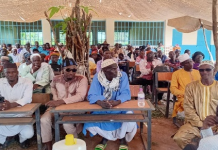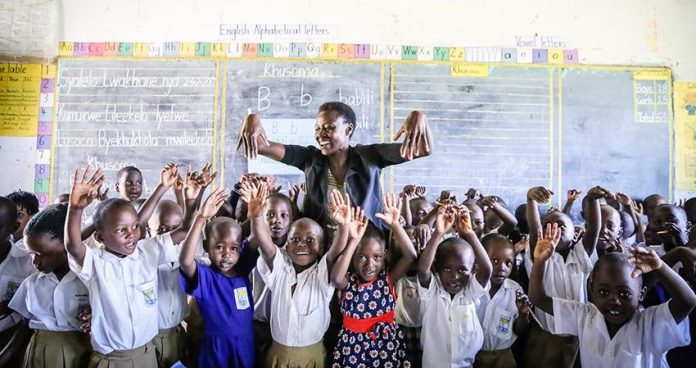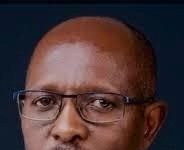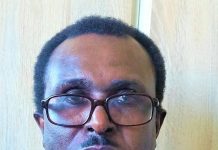By Nelson Manneh
To level the playing field in The Gambia’s education sector and provide equal opportunities for children from poor backgrounds, the government introduced a free education policy in 2013, aiming to cover primary and secondary schooling. More than a decade later, parents with children in public schools argue the policy is disconnected from the everyday reality of schooling in the country. Despite the label “free,” many continue to pay significant sums for textbooks, uniforms, study fees, and other school-related costs.
The intention behind a free education policy is clear: remove financial barriers to education, uphold international human rights standards, and ensure that children—regardless of socio-economic status—can access learning. The policy outlines that learning materials should be provided to students to improve educational quality and outcomes. In practice, however, that promise is far from fulfilled.
In many public schools, government-provided textbooks are insufficient, forcing students to share them without being allowed to take them home. Teachers often recommend that students purchase personal copies so they can complete assignments and revise at home.
A visit to several public schools in Regions One and Two revealed widespread frustration among students and teachers.
Maimuna Cham, a student at Muslim High School, was blunt in her assessment: “The free education policy is just a literature but it does not reflect any reality with what is happening in our school.” She pointed out the burden of paying for extra classes, which have become a necessity for passing exams. “Teachers charge us per subject and the least you pay per subject is D500. If you are doing eight subjects, you will pay around D4,000 per month. This is just equivalent to the tuition fee in some private schools,” she said. She argued that the government should revise the policy and trim it down to what is realistically achievable.
Mr. Abdoulie Corr, a teacher, echoed these frustrations. “The government of The Gambia cannot provide textbooks to students which are the cheapest. How can they achieve the free education policy?” he asked. “Free education is beyond advocacy or building schools. It has to do with making sure that students achieve basic education freely, whether their parents are rich or poor, alive or even dead.”
Corr, who has taught in both private and public schools, said that in reality, public education is not free. He believes that for the policy to succeed, the government must holistically review it and include parents in the process so their expectations are aligned with the policy’s objectives.
While the Constitution guarantees access to free, compulsory, and universally accessible basic education, the realities in public schools fall short. The policy—which began with primary school in 2013 and later expanded to lower and upper secondary levels—only waives tuition. Parents must still bear the cost of uniforms, books, and other school essentials.
Madi Jobarteh, Executive Director of the Edward Francis Small Centre for Rights and Justice, criticized the notion of “free” education as misleading. “It gives the impression of charity,” he said, emphasizing that education is paid for through taxes and public funds. Citing Section 30 of the Constitution, he argued that while fees have been waived, parents continue to shoulder hidden costs like transportation and materials.
“There are incidents of delays in getting books in the schools while space is still an issue, as well as the availability of learning and teaching materials amidst poor general education facilities,” he said. He emphasized that the right to education must be more than a structure or the presence of teachers. “Libraries are either absent or poorly equipped while technology is almost absent,” he said. “The focus should not just be ‘free’ education in terms of non-payment of fees; rather it should be about holistic provision of quality education.”
Jobarteh maintained that the policy is achievable, but that the Ministry of Basic and Secondary Education (MOBSE) must show stronger leadership and accountability. “The evidence of this can be found in not only the WASSCE and GABECE exam results, but also in the poor environment and low quality of teaching,” he added. He criticized the government for not meeting its financial commitment to education, noting that The Gambia allocates less than 10% of its national budget to the sector—far below the 15% recommended by the Jomtien Declaration.
Modou Lamin Conteh, a retired headmaster, framed free education as a human right, not a privilege. “It should not be seen as charity,” he said, emphasizing that international law mandates free and compulsory primary education. But he added that after decades in the school system, he has yet to see full implementation of the policy. “The textbooks that are given to students in public schools are just subventions to me but have nothing to do with free education,” he noted.
Kebba Kandeh, a retired educationist with over 30 years in the sector, agreed. “The free education policy we have in The Gambia is just next to nothing. It does not fulfill its purpose because the realities of what is happening in schools do not match what is documented,” he said.
He pointed out that indirect costs such as school books, uniforms, and travel still prevent many low-income families from sending their children to school. He stressed that a state’s financial difficulties cannot relieve it of the obligation to provide free primary education under international law.
Nafisatou Kujabie, a parent with two children at Gambia High School, also criticized the policy. “All my children went through public schools but the free education the government is talking about does not exist in reality,” she said. Recalling a previous government initiative under Yahya Jammeh to promote girls’ education, she said that program came closer to providing genuine free education.
She added, “If students are not paying school fees but they buy uniforms, textbooks, exercise books, and other learning materials, how can that be described as free education?” She argued that the costs parents incur far exceed the government’s investment.
“In some public schools teachers introduce what they call after-school studies and they compel students to attend where they pay almost equivalent to what private schools charge,” she said.
After more than a decade of implementation, The Gambia’s free education policy remains more of an aspiration than a reality. Stakeholders agree that unless the government makes serious, targeted investments—and grounds the policy in the lived realities of students and families—the label “free education” will remain a hollow promise.


















